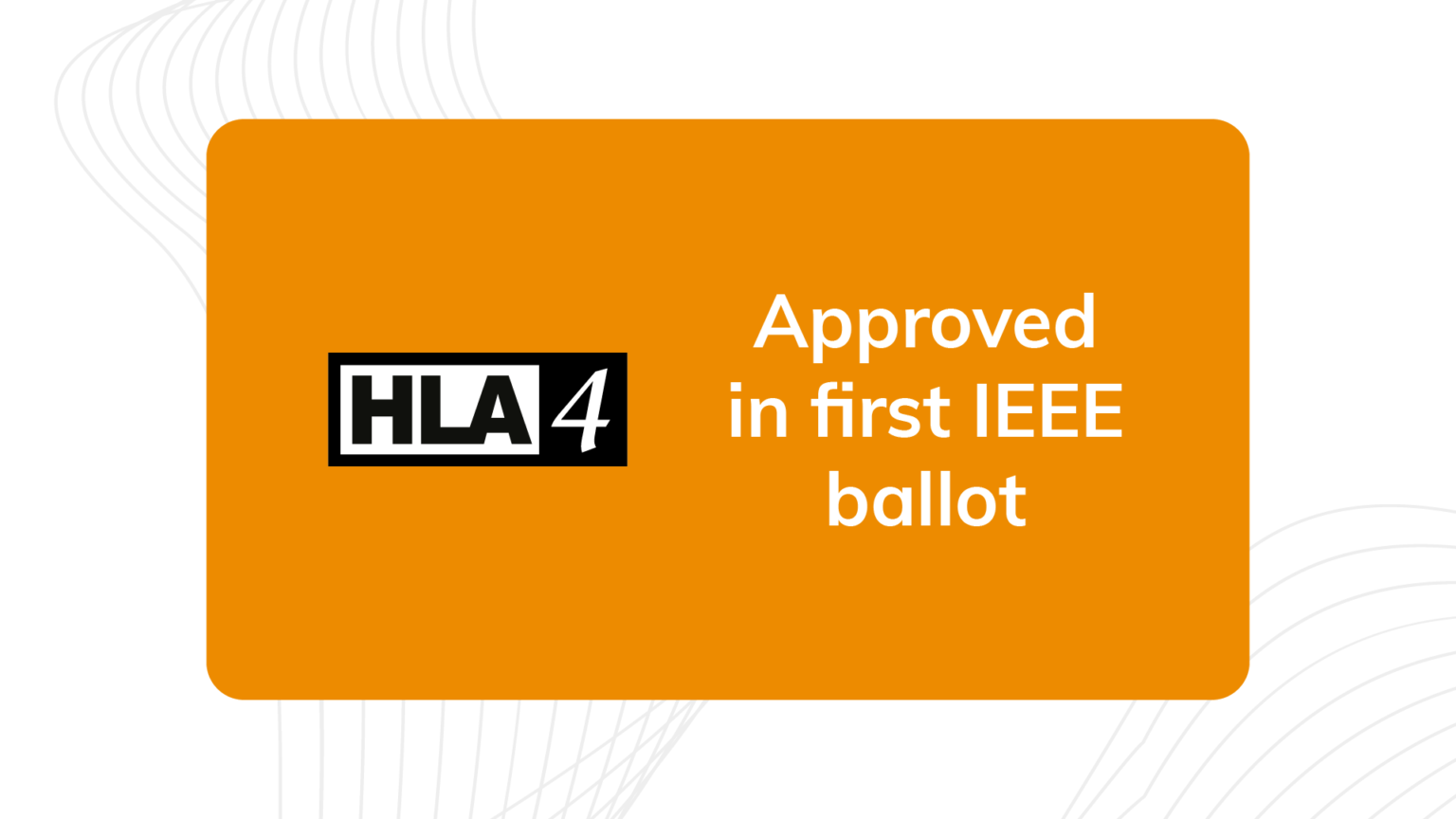We’re happy to announce that the development of HLA 4, as of April 22, has passed a significant milestone, having been approved in its first round of IEEE balloting. The new version of the popular HLA standard has been in development since early 2015 when a product development group (PDG) was formed within the realms of the Simulation Interoperability Standards Organization (SISO). Since then, the working group has iteratively worked to finalize a draft of the new standard.
Earlier this year, the draft was finalized and sent to IEEE for a formal balloting and publication process. With the passing of the voting deadline a few weeks back, we can conclude that the community has approved the new standard with comments, as is expected at this stage. This milestone is significant, as it means the work ahead will solely focus on the areas that have received comments, which means the bulk of the standard is now finalized and approved.
The comments collected point out details that need to be resolved before the standard can be finalized and published by IEEE. Roughly 60% of comments are solely editorial, but for the remaining 40%, we have some important discussions ahead on how to solve the highlighted areas. Two examples of features introduced with the arrival of HLA 4, and that has received some comments that need to be resolved, are the introduction of The Federate Protocol and Directed Interactions.
The Federate Protocol provides a standardized protocol to connect to the RTI, much like DIS. All other connection methods will remain, but having a federate protocol will add a new capability previously missing in the standard. The reason for including this in the standard is to simplify cloud deployment and make HLA more scalable.
Directed interactions is a way to increase the scalability of HLA simulations by permitting direct interactions between federates rather than requiring all interactions to take place through the RTI. This is especially useful in applications where a shared modeling responsibility is used. A typical use case of shared modeling is to have separate federates simulate different parts of the same entity. This could, for example, be an airplane where one federate simulates the radar and another federate simulates the flight model. To reduce latency and bandwidth usage, directed interactions permit information exchange directly between the federates rather than through the HLA RTI.
Although work does indeed remain to be done, the significance of passing the first ballot should not be underestimated. Pitch looks forward to continuing to be a committed and engaged member of the standardization community, contributing to the final steps leading up to the publication of a completed HLA 4 standard. As for the timeline, it’s always tricky to say, but we remain hopeful a publication will be possible before the end of 2023.

